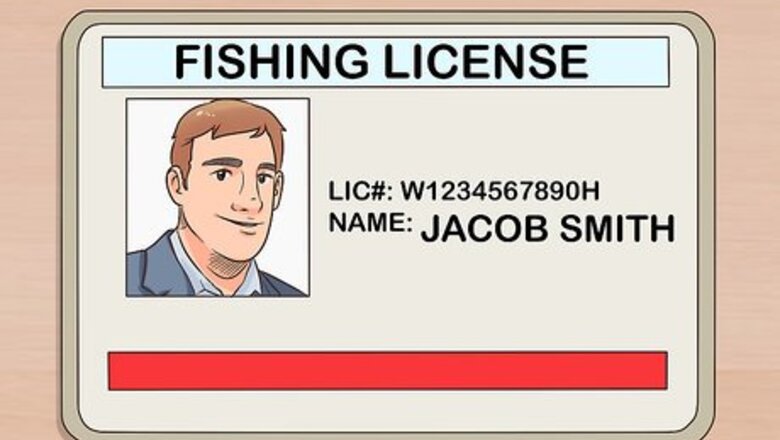
views
Gearing Up to Go Fishing
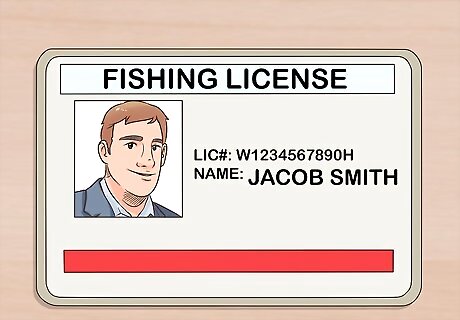
Get a fishing license. Before you can go fishing you need to get a fishing license. Each state has its own set of requirements, but it is generally pretty easy to get one. Plus, the money for your license goes toward natural resource conservation and education. Some people prefer to take a fishing course before trying out ice fishing. Some of them are even free. Make sure you know your state’s regulations before any type of fishing to avoid a fine. Certain fish species are off limits, size limited, or catch-and-release only.

Find someone to go with you. It is not a good idea to ice fish alone, for your safety. If you fall into the ice and there is nobody else there to pull you out or call for help, you are in a lot of danger. This is especially important if you are fishing somewhere remote. Ask a friend to go with you, or go with a group.
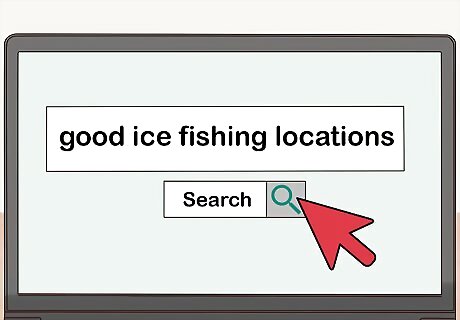
Decide where to ice fish. Most state-owned lakes allow ice fishing. You may want to check before heading out to any county-owned bodies of water, as those are often ice fishing prohibited. Lakes, ponds, or any other large body of water should have enough fish under the ice. Popular species for ice fishing are Walleye, Trout, Crappie, Yellow Perch, Largemouth Bass, Pike, and Sunfish. Check around to see if anyone knows where these fish are swimming around. If you don’t know anyone, ask the local bait and tackle shop. Online forums are a great resource for finding good ice fishing locations. Once you have a location in mind, tell someone where you are going and when you expect to return. That way, if they do not hear from you when you expect to be back they can call for help.
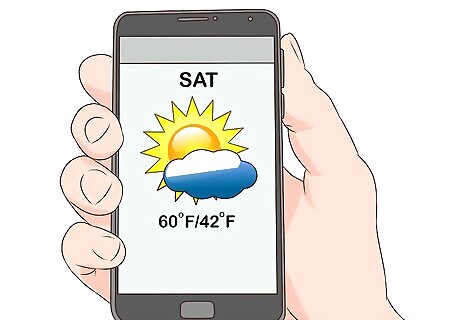
Check the weather. As ice fishing generally takes place in the winter, weather conditions can be variable or unpredictable. This is important if you are not used to cold temperatures, or spending long periods of time on ice. Make sure you know what time the sun goes down. Walking across the ice can be dangerous at night and it is easier to get caught in the dark during short winter days.
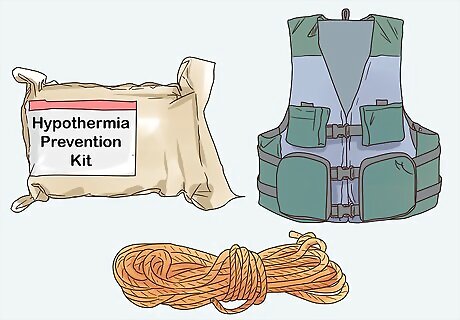
Educate yourself in safety. As with any outdoor activity, make sure you know proper safety procedures. Bring a first-aid kit that includes hypothermia supplies, flotation devices, and rope. More importantly, know how to use everything in your kit. There are other things to consider beyond knowing how to use your first-aid kit. You should not fish alone. Be careful where you step on the ice, make sure the ice has a blue tint, is not cracked, and is very thick. The people in your party should spread out as you walk across the ice, rather than all walking together in the same spot. If you are going to be somewhere remote, you might consider investing in a GPS device. If you want to verse yourself in safety beyond the basics consider taking an outdoor safety course.
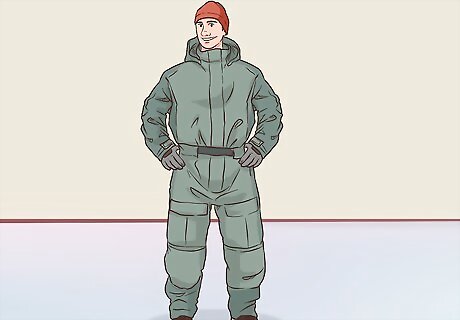
Wear proper clothing. The most effective way to shield yourself from the elements while you are out there will be to layer. You will want to bring a backpack or duffel to carry any layers you put on or take off. With the right layering, you should be able to stay warm throughout the day. Your first layer will be a thin moisture-wicking layer. Make sure your bottom layer is not made from cotton. Polypropylene, high-tech polyester, or wool materials work best. This is true for your shirt, pants, socks, and glove liners. Your second layer should be a thicker layer. A wool sweater or fleece would both work fine. Your top layer will be a waterproof or down jacket. It will protect you from the cold temperatures and any possible rain. Make sure your boots are warm and waterproof. If you plan on doing a lot of walking to get to your fishing spot, break your boots in before your trip. Bring a warm hat to wear (like a knit beanie), and gloves or mittens. You want to make sure your extremities are warm. A lot of people will bring a pair of goggles to protect their eyes in case there is a snow blizzard. Metal spikes that wrap onto the bottom of your shoes can make your trip along the ice a safer one. They help grip the ice better than just walking with the soles of the boots alone.
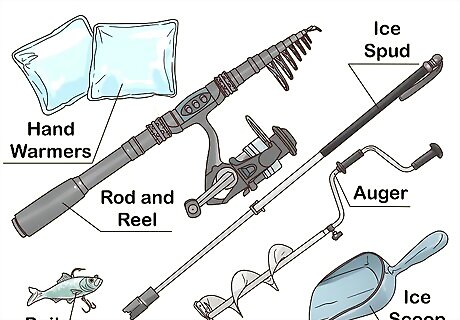
Bring the right gear. Wearing weather appropriate clothing is just one category of gear you need for ice fishing. Depending on conditions, you may need more gear for your safety and comfort throughout the day. You need gear to drill your hole, ensure your comfort, and catch your fish. Many ice fishers bring an ice spud with them to check the ice as they walk along it. They use the rod to tap the ice in front of them, listening to make sure it is safe to take another step. Ice shanties can provide a lot of comfort while you are sitting out there for many hours. They are small shelters you can set up near your ice hole that help protect you from the wind. It is also nice to have a chair to sit on so you do not have to stand all day. Some ice fishers bring hand warmers just in case the temperatures dip. You can find hand warmers at most outdoor gear shops. You will need an auger (or ice chisel) to drill your ice hole once you find a good spot. This tool drills through the ice into the water below. An ice scoop is handy for removing excess ice from your hole once you have drilled through it. This is how you get a clean ice hole to fish in. You will need a rod and reel to catch your fish. Some rods and reels are better for ice fishing. Check your local outdoor store and ask someone if they have any special sets for ice fishing. If not, any rod and reel will work. Bring bait, tackle, and a tackle box. You will need this gear to lure your fish. If you are not sure how to use bait and tackle, most tackle shops will explain it to you.
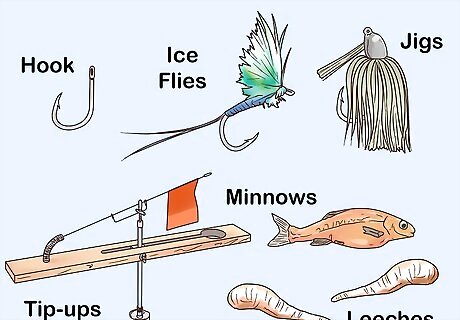
Use the right bait and tackle. The bait and tackle you use will depend on which species you are trying to catch. Some fish species respond better to live bait, and some respond better to fake bait. Decide ahead of time which species you want to catch so you know what bait and tackle to bring with you. Most fish aren’t as aggressive in the winter, so use lighter tackle for ice fishing. Common tackle ice fishing are jigging rods, hooks, ice flies, jigs, and tip-ups. Common live bait in ice fishing are minnows, leeches, and night crawlers. If you aren’t sure what to use, ask someone at a local tackle shop.
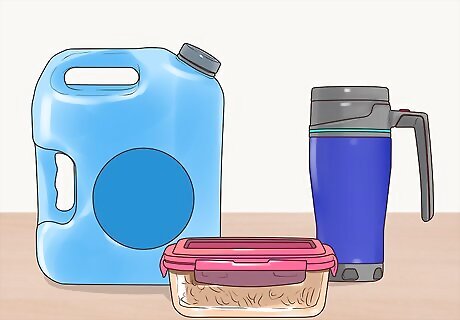
Bring enough supplies. Since you will be ice fishing most of the day, bring enough food and water to keep you satiated and hydrated. It will behoove you to bring hot drinks as well, to help keep you warm. Bring extra since you burn more calories in cold temperatures. Bring a bucket in case you catch something! You can bring a bucket for yourself, or one big enough to share with your fishing party. A lot of people will carry their food out in the bucket and then carry the fish back in it.
Setting up Your Hole
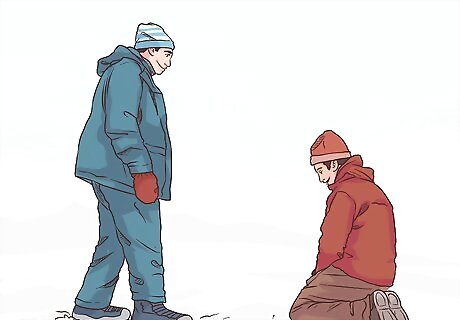
Choose your spot. Every ice fisher has their own way of choosing where they want their spot. Many ice fishers will scout the lake in the fall to see where the fish are hanging out so they know where to go in the winter. Others will go back to their favorite fishing spots from before.
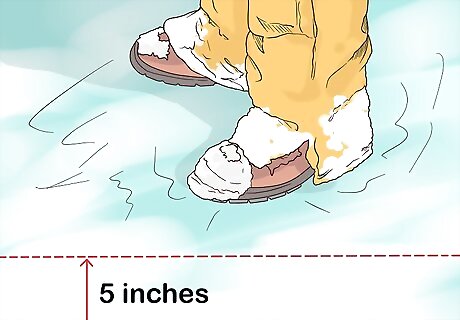
Make sure the ice is thick enough. The most important part of setting up your ice hole is making sure the ice is thick enough to hold your weight. Since you will be sitting there all day it is necessary that you make sure you will not fall through the ice. Four inches of ice thickness will support one ice fisher and their gear. Of course, you do not want to go fishing by yourself, so you should make sure your ice is at least five or six inches thick. You can measure the ice after cutting it, or check the ice fishing reports from your wildlife district office.
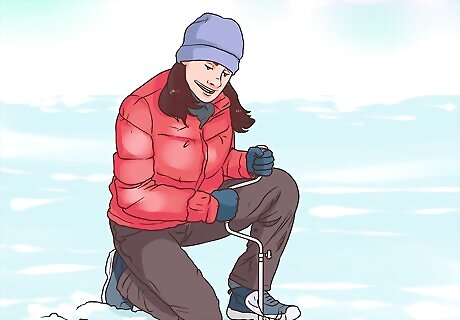
Drill your hole. Once you have selected your ice fishing spot you will need to drill your fishing hole. Using your auger, place it perpendicular to the ice so that the tip is touching the surface. Push the auger down onto the ice and turn it clockwise until the blade begins to cut into the surface. Keep turning until the chunk of ice releases and you see the water below. If you mess up your hole, just start over in another spot nearby. It is very common for an ice fisher to drill several holes in a day. You can spend a day practicing using your auger until you are comfortable using it.
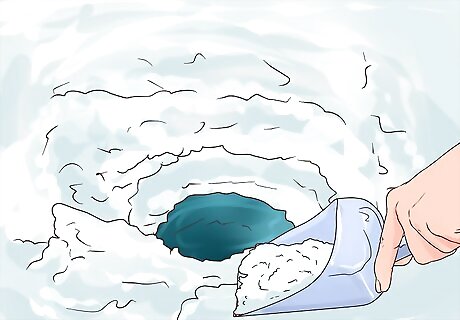
Scrape away the excess ice. Use your ice scoop to remove any excess ice that remains. Place the scoop into your hole below the level of the ice so that it is in the water. Lift it back up, bringing with it any snow or ice that may have fallen into the hole when you drilled it. You can do this throughout the day if any ice or snow gets into the hole.
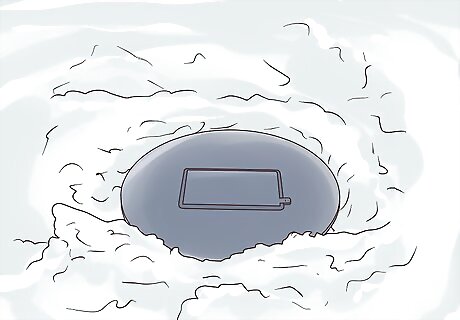
Cover the hole. If it is snowing hard, or you think you will leave your hole at any point in the day you can cover it with your bucket or a catch cover. This will prevent more snow or ice from getting in while you are away.
Fishing in the Ice
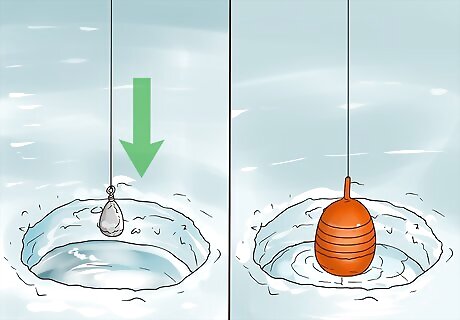
Determine the depth of the water. First, you need to know how deep the water is, so you know how far to sink your line. You can do this by putting a sinker at the end of a hook and dropping it into the water. Let the reel unreel until the sinker reaches the bottom. Bring it back up a few feet from the bottom and place a bobber where the surface of the water is.
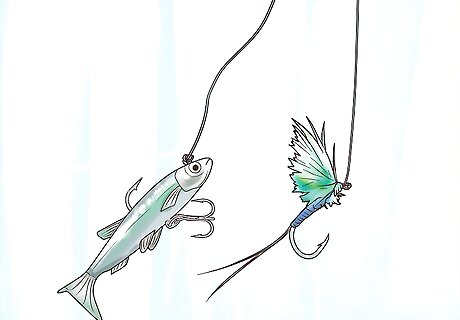
Place your bait on your lure. Depending on what species you want to catch, select bait from your collection and place it at the end of your lure. Once your bait is on the lure you can put the line back into the hole.
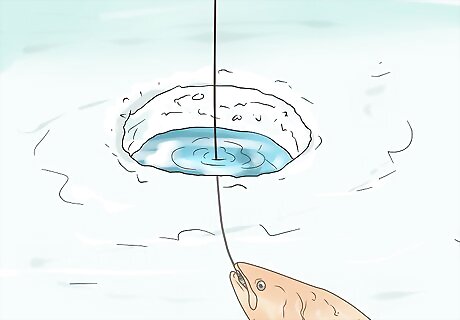
Wait for your fish to bite. Now is your time to wait. If you are using a tip-up, you will place that over the hole so that it is resting on the edges. Otherwise, you can prop your rod up somewhere so that it is in a sturdy location should a fish bite your line. This is a good time to play games with your fishing pals, converse, or just enjoy yourself in the great outdoors. If you do not get any bites on your line after a few hours, drill another hole. You can drill another hole in the location you are in, but you will fare better to move to another location at least few hundred feet over and drill a hole there. If that does not work, try using live bait if you are not already.
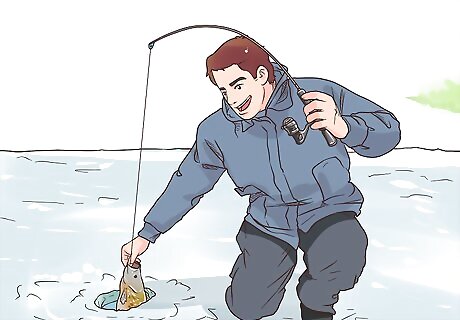
Reel your fish in. When the fish bites, reel your line in or lift your line out of the hole, lifting the fish along with it. Unhook the fish from the line. You can drop the fish into your bucket to clean later. Keep fishing!


















Comments
0 comment